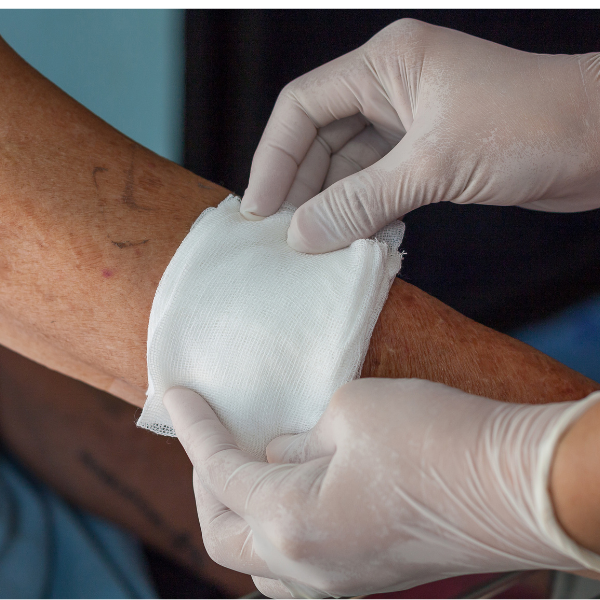Diabetic foot ulcers are the #1 cause for non-traumatic lower extremity amputations, accounting for over 80% of all amputations. But how do they advance to amputation? And is there any way to prevent diabetic foot ulcers? Let’s learn more.
What is a diabetic foot ulcer?
A diabetic foot ulcer is an open wound, usually on the bottom of the foot, that results after tissue has broken down enough to expose the layers underneath. Some can even advance down to the bone, and gangrene can develop around the ulcer, signaling tissue death.
Roughly 15% of patients with diabetes will get a diabetic foot ulcer at some point in their lifetime. They are one of the most debilitating complications of diabetes, as they can lead to life-altering amputations. However, even if they don’t advance to that stage, they still require extensive wound care and can deeply hamper a patient’s ability to do their day-to-day tasks.
What causes a diabetic foot ulcer?
Diabetic foot ulcers can be caused from a number of factors and often from a combination of them. Here are some of the most common factors that cause diabetic foot ulcers: poor blood circulation or vascular disease, high blood sugar or hyperglycemia, diabetic neuropathy (nerve damage caused by hyperglycemia), foot deformities, irritations to the foot, previous woot wounds, poor hygiene, and poorly fitting shoes.
Any of these factors can lead to inflammation of the foot, which precedes a diabetic foot ulcer. Before the wound forms, the area may rise in temperature signaling inflammation. This change is too subtle for patients to notice on their own. Many don’t realize the foot ulcer is coming until it begins to show physical symptoms like blackening of the surrounding flesh, numbness, and abscesses.
Who is at risk?
Anyone with diabetes can develop a diabetic foot ulcer. However, the most at-risk patients often have signs of vascular disease, which makes it harder to notice a foot ulcer forming. In addition, there are other risk factors, such as the following: use of insulin, age, obesity, alcohol and tobacco use, and other diabetic complications like kidney, heart, or eye disease.
How do you treat a diabetic foot ulcer?
If a patient suspects they have a diabetic foot ulcer, they should seek treatment from a podiatrist immediately. Because diabetes and diabetic neuropathy can slow healing, it’s critical to be seen as soon as possible. Their doctor may do a number of things to treat the diabetic foot ulcer, including: “offloading” or taking pressure off of the foot, “debridement” where dead skin and tissue is removed, wound care like medications and dressing, early administration of antibiotics to prevent infection.
How do diabetic foot ulcers lead to a diabetic amputation?
The worst scenario for a diabetic foot ulcer is that it progresses past the point of treatment and requires a lower extremity amputation. This can happen due to infection of the wound, or simply because time has passed and the ulcer wasn’t identified early on, due to complex factors like neuropathy or vascular disease. If there is nerve damage, a wound like a foot ulcer can go unnoticed because it won’t cause any pain.
It’s also difficult for many people to examine the bottom of their feet regularly. Some patients may have caretakers that can perform regular foot exams, but many do not.
In addition, many patients have diabetic retinopathy. This condition leads to vision impairment, making it even harder to see any changes to the foot. Even if foot exams are done regularly, it can be hard to determine if a foot ulcer is forming.
Diabetic amputation of lower extremities should be a last resort, only taken once the foot ulcer has progressed significantly. If the tissue is damaged beyond repair, it might be the best option for the patient. Their doctor will also consider quality of life, risk of additional foot complications, and other criteria to make their decision.
Can diabetic amputations be prevented?
Absolutely. In fact, they are highly preventable. The best way to prevent an amputation is to prevent the diabetic foot ulcer from forming. There are steps that can be done at home, such as performing regular foot exams, engaging in daily movement to keep blood flowing, and wearing proper footwear.
Additionally, diabetic foot ulcers can be prevented by using thermometry. Thermometry will measure the temperature of the foot, recognizing changes that signal inflammation. When intervention occurs earlier on, most diabetic foot ulcers can be prevented — with the hope that amputation is not necessary.





